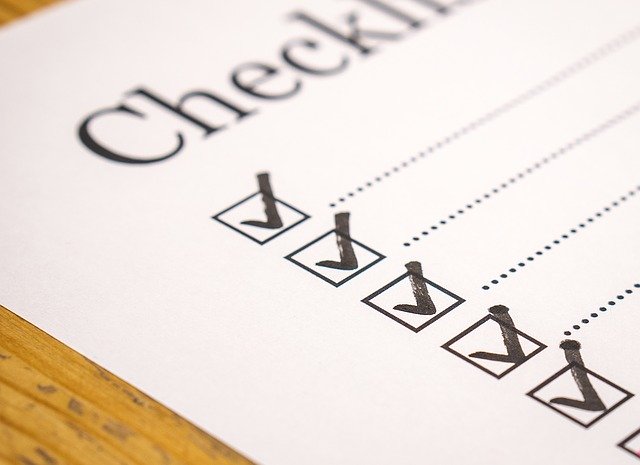Equipment Loan Agreement
Your Step-by-Step Guide
WHAT YOU NEED TO LOOK FOR
An equipment funding agreement is a document that delineates all of the details of your equipment funding. Once you sign your equipment funding agreement, you are legally obligated to adhere to all the details that the lender included in the body of the document. Whether it’s a pesky fee hidden in the fine print or an overarching legal intricacy about how you can handle your equipment, each detail in your equipment funding agreement is important to parse through.

As you review your equipment funding agreement, you’ll need to check and confirm the following details:
- 1. Type of equipment funding
- 2. Ownership
- 3. Funding amount
- 4. Repayment term
- 5. Repayment schedule
- 6. Cost of Working Capital, APR, and total cost
- 7. Prepayment penalties
- 8. Penalty fees
- 9. Maintenance costs
- 10. Alterations or improvements
- 11. Insurance
- 12. Definition of default
- 13. Variable vs. Fixed interest
- 14. Miscellaneous fees
To be sure, whether you consult sample Business Funding agreements, equipment funding agreement templates, this guide to equipment funding agreements, or all of the above, it’s prudent to seek oversite from a legal professional before you sign onto your equipment funding debt.
Nonetheless, it certainly helps to get an overview of equipment funding agreements before taking your questions to your lender and/or lawyer. Here is your guide to reading over—and understanding—your equipment funding agreement.
EQUIPMENT FUNDING AGREEMENT: 14 DETAILS TO CHECK BEFORE SIGNING
Before anything, you need to check in on the tenants of your equipment funding agreement. Diving into the fine print on your this type of Business Funding agreement is important, sure, but the following basics are the first things you’ll need to check up on.
Do they match the features of the Business Funding that you discussed with your lender? Or are there discrepancies between what you see on your equipment funding agreement and what you were lead to expect of your equipment funding?
Here are the first six things you need to pore over in your equipment funding agreement.

EQUIPMENT FUNDING AGREEMENT: BEWARE OF JARGON
As you comb through the details of your equipment funding agreement, make sure to write down and research any lending jargon that you come across. Even if you’re fairly certain that you’re familiar with a concept that your equipment funding agreement mentions, be sure to do your research and ask your lender about it.
Much of the time, funding terminology will have a very specific meaning, so a general idea of its meaning can often be way off. Plus, the unending list of acronyms used in equipment funding agreements will require a bit of research. Keep vigilant with the vocabulary used in your equipment funding agreement as you comb through all of the numbers.


YOUR EQUIPMENT FUNDING AGREEMENT CHECKLIST
Now that we’ve made our way through all of the minutiae that you’ll need to check in on before you sign your equipment funding agreement, let’s condense everything into one summarizing checklist.
Granted, this list won’t be comprehensive for every equipment funding agreement—depending on what type of equipment funding and what type of lender you’re working with, you might need to check in on additional points in your equipment funding agreement.
That said, the following things are a great place to start while reviewing your equipment funding agreement before signing on:
- Ensure that you’re taking on the exact type of equipment funding you think you’re taking on.
- Whether it’s your lender, your company, or you, who technically owns the equipment in question should be clear in your equipment funding agree
- Verify your exact equipment funding amount.
- Verify the cost of working capital and total APR on your equipment funding.
- Double-check your equipment funding repayment term length and payment schedule.
- Calculate and confirm the total cost of your equipment funding.
- Check the fine print in your equipment funding agreement for the following details:
- Prepayment penalties your lender might charge you for paying down your debt early
- Penalty fees and in what circumstance your lender might charge them
- Who will cover the maintenance costs for the equipment in question
- Whether you’ll be able to perform alterations or improvements on the equipment
- Whether you’ll be obligated to pay for insurance for the equipment
- How the equipment lender defines default in the equipment funding agreement
- Whether the equipment funding carries fixed or variable interest
- Any other miscellaneous fees your equipment lender might charge you
- Check-in with your lender if you notice any discrepancies or have any questions before you sign your equipment funding agreement
NAVIGATING YOUR EQUIPMENT FUNDING AGREEMENT: THE BOTTOM LINE
As you pore over the details on your equipment funding agreements, it might be tough to decode all of the funding terminology and jargon. That said, the effort you put into parsing through your equipment funding agreement now will be very much worth it in the long run. Be sure to consult someone with legal experience when you come across something strange or incomprehensible in your equipment funding agreement, and follow up with your lender if any of the details are different from what you discussed with them. At the end of the day, you want to be familiar with all of the details that accompany any debt you take on.